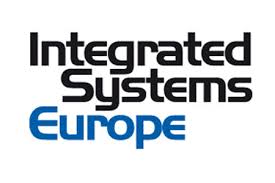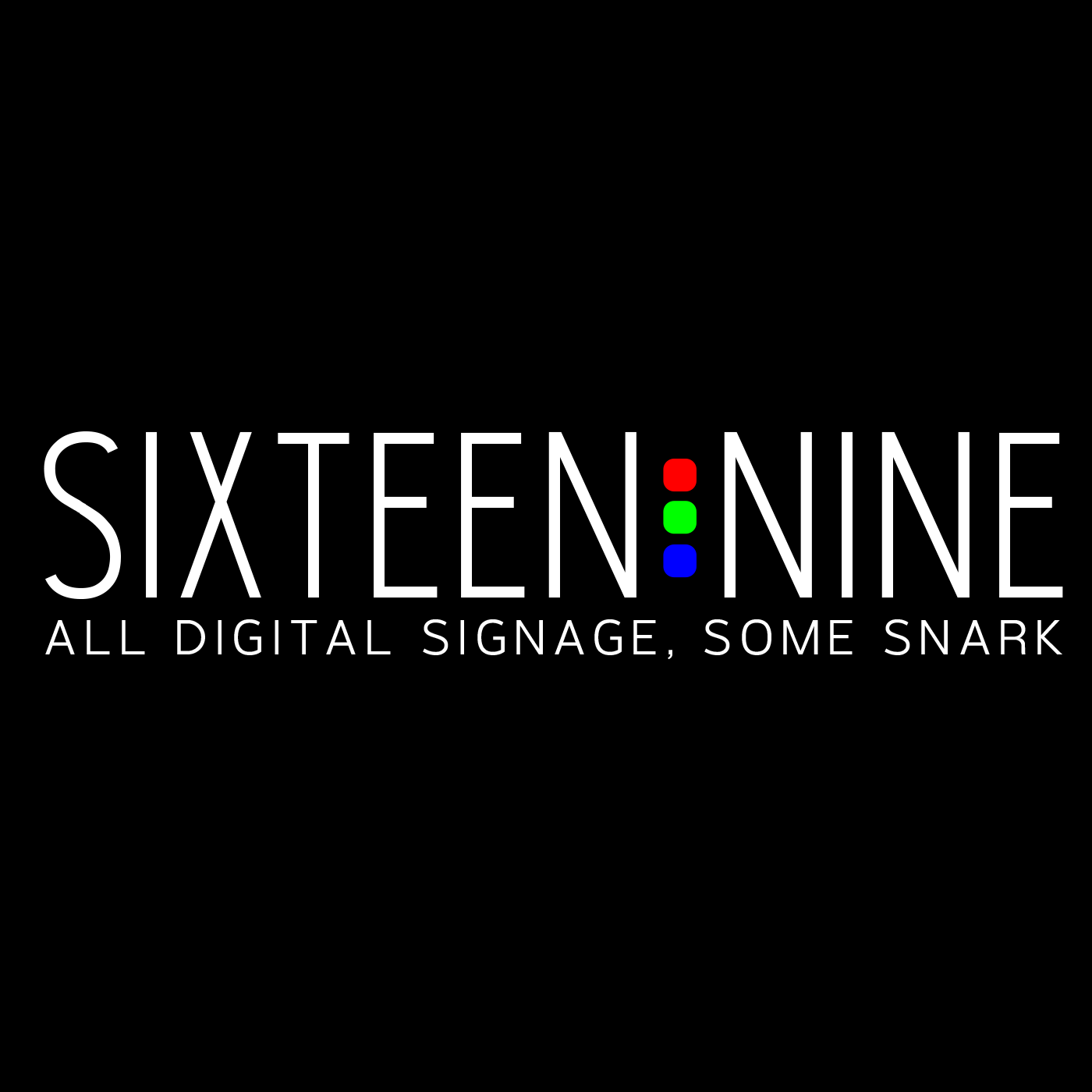Episodes

Wednesday Sep 20, 2017
David Labuskes, AVIXA
Wednesday Sep 20, 2017
Wednesday Sep 20, 2017
I was in the Washington, DC area last week for what turned out to be the rebranding of Infocomm as AVIXA - a loose acronym for the Audiovisual and Integrated Experience Association.
The trade association had invited me, and a pile of other trade journalists, for a press conference and follow-ups about … something. They wouldn’t say what and had us signing NDAs promising we wouldn’t spill the beans ahead of time.
It’s a lot more than just a name change for Infocomm, which will still be the name of the big annual trade show and versions of it in other countries. The new AVIXA branding reflects much deeper thinking by the InfoComm board and executive team, which is run by CEO David Labuskes.
On the tail end of a crazy-busy launch day, and in the middle of a cocktail party, I managed to grab Labuskes for a chat, to find out what AVIXA is all about, and what it means for people and companies in the digital signage industry.
Subscribe to this podcast: iTunes * Google Play * RSS

Wednesday Sep 13, 2017
Peter Fahlman, Telemetry
Wednesday Sep 13, 2017
Wednesday Sep 13, 2017
A lot of companies run by creatives and software developers have found their way into the digital signage business on the backs of projects they delivered, but I wouldn’t really see that happening with a company that’s all about online payments.
That’s exactly, though, the back story on Telemetry, a Vancouver, BC start-up that grew out of a need by the sister company to visualize all the data they were generating from transactions. The software team looked around the marketplace for applications that would do the job, and when they concluded what was out there didn’t fit, they wrote their own.
With home-grown digital dashboards around the office showing the team what was going on in the business, CEO Peter Fahlman and his colleagues concluded what they had was a great tool - but also something they could productize … without really even knowing what digital signage was all about.
Now Telemetry is a full, cloud-based digital signage CMS, tightly tied in with Google’s Chrome services. Enabling real-time dashboards is, to me, the particularly interesting aspect of what the company does, but Fahlman tells me in this conversation that they’re more than just live pie charts and graphs.
Subscribe to this podcast: iTunes * Google Play * RSS

Wednesday Aug 30, 2017
Zach Klima, WaitTime
Wednesday Aug 30, 2017
Wednesday Aug 30, 2017
If your digital signage screens are there to make something faster, better or easier for the people who are looking at them, you are doing good things.
That’s the idea behind a Detroit start-up called WaitTime - a digital signage and smartphone app solution that uses cameras and artificial intelligence software to give people at sports and entertainment venues mission critical information like which washroom lineups are shortest, and where to go to get intermission beer and drinks quickly.
The data that comes out of those camera feeds and software inform game and concert-goers where lines are shortest, which is great for fans - but also for venue operators. The screens load-balance lines and reduced the number of times people abandon lines at concessions. That means more sales.
CEO and founder Zach Klima says the systems tend to pay for themselves at arena and stadiums in less than a year.
In our chat, we talk about the roots of the platform, how it works, who’s backing it, and how it can play nicely with the digital signage companies who already service the sports and entertainment venue market.
Subscribe to this podcast: iTunes * Google Play * RSS

Wednesday Aug 09, 2017
Kristin Russell, Arrow Intelligent Systems
Wednesday Aug 09, 2017
Wednesday Aug 09, 2017
Kristin Russell jokes about Arrow being a massive company few people even know about - with $24 billion in annual sales and some 18,000 people walking around with Arrow on their business cards, in 90 countries.
She runs Arrow Intelligent Systems, which does everything from design engineering and integration services to global logistics. One of the key areas for the business unit is digital signage, and while Arrow has been on the edges of the industry for years, it got a lot more involved when it acquired Seneca Data a couple of years ago. The company picked up a tech firm highly respected in the industry for its media players and video wall servers.
We met recently at Seneca’s offices in Syracuse, NY, and got into a lot of things in our chat.
Russell talks about how Arrow is very different from traditional distribution companies, and how the company mantra is to be thinking and working on ideas that are five years out and real.
We get into her background as CIO for the state of Colorado. Among her accomplishments in that gig was attracting Arrow to Denver, with no sense she’d end up there, running a large division with its own P&L.
We also talk about her being a Global President of a fast-growing company, in an industry that is still overwhelmingly male.
Subscribe to this podcast: iTunes * Google Play * RSS

Wednesday Aug 02, 2017
Hacking Dangers In Digital Signage, with Gary Feather, CTO, Nanolumens
Wednesday Aug 02, 2017
Wednesday Aug 02, 2017
I’m changing up the podcast a little bit this week.
I have my own rule that I want to talk to a bunch of other companies first before I talk to one a second time.
I’ve also made this podcast about people and not issues.
But this week I am talking to Gary Feather, CTO of the display company NanoLumens, even though I spoke with his boss Rick Cope last summer.
Here’s why. Feather is running a webinar next week on security, and the steps he thinks any substantial digital signage operator out there should be taking to ensure their screens and systems are not compromised by hackers.
The risk is not just about keeping some teenagers from getting naughty movies up on the screens in a store, though that’s definitely not good. It’s also about ensuring the connected media players driving screens are not the side door access into private and mission critical systems within businesses. Target’s big hack three years ago came in through the HVAC systems.
It’s an important subject, and we spend this podcast previewing a little of what he plans to talk about August 8th.
Subscribe to this podcast: iTunes * Google Play * RSS

Wednesday Jul 12, 2017
Robin Carlisle, Framestore Labs
Wednesday Jul 12, 2017
Wednesday Jul 12, 2017
Robin Carlisle is Global Head of Creative for Framestore Labs, a UK-based creative technology shop that specializes in making beautiful and cinematic real-time visuals.
Labs is part of a larger company that has been doing amazing visuals for years. For example, that’s Framestore’s work in movies like Gravity, which somehow imagineers what happens when satellite debris takes out a space station.
Carlisle’s company is involved in all kinds of projects, and recently, has done work that falls squarely in the digital signage and interactive signage buckets. That includes work done for the London Stock Exchange, Morgan Stanley and Ford.
We connected by Skype, with Carlisle joined by the company’s production head Jonny Dixon, just in case the questions got too deep into the technical weeds. They didn’t.
Subscribe to this podcast: iTunes * Google Play * RSS

Wednesday Mar 08, 2017
Jose Avalos, Intel
Wednesday Mar 08, 2017
Wednesday Mar 08, 2017
Jose Avalos has been leading Intel’s digital signage practise since 2009 - evangelizing for the use of Intel chipsets and related technologies for the devices that play back content. When he got started, he says Intel was inside about 10 percent of the boxes used in digital signage. Now it’s more like 75 percent, he says. So from that measure, it worked.
But since 2009, smartphones and then smart TVs really bubbled up, and Intel has seen low cost ARM processors being touted and used inside set top boxes and sticks and smart displays as media players - cutting out the need for Intel CPUs.
In our chat, we talk about Intel’s role in this sector, the implications of ARM processors and system on chip displays, and what they’re doing about it. We also get into Intel’s dabbling in the software side of the business, and talk about IOT.
Jose’s a talker, but I did get a few words in here and there. Enjoy.
Subscribe to this podcast: iTunes * Google Play * RSS

Wednesday Mar 01, 2017
Dan Dawson, Grand Visual
Wednesday Mar 01, 2017
Wednesday Mar 01, 2017
The production and creative technology firm Grand Visual does some of the most interesting data-driven creative work you'll find in the digital signage and digital out of home industry, so I was really happy to learn co-founder Dan Dawson was available at ISE to chat for a few minutes.
Dawson is the Chief Creative Technology Officer at the London-based company, which has been around for more than a decade and works with some of the world's biggest brands - including Pepsi, Google, McDonald's and Virgin - on technology-driven media campaigns. You may remember things like the Green Giant showing up via augmented reality at Grand Central Station or flying saucers and aliens seen invading London through the lens of bus stop digital screens.
We get into a lot of things in our chat - the creative process, the technology, strategy, what works and what is just buzz. We talk about programmatic content and media targeting, and we get into how data is a really powerful tool for marketing and messaging.
If you touch on creative, listen and learn from a master.
Subscribe to this podcast: iTunes * Google Play * RSS

Monday Feb 13, 2017
ISE 2017 Bonus Episode
Monday Feb 13, 2017
Monday Feb 13, 2017
This is a bonus edition. I did a pile of sit-down interviews last week in Amsterdam with different execs for full-length podcasts, and you will hear those over the next several weeks. I also did some stand-ups that are already live, with four already up. These are the other four.
I normally get these things properly sound-engineered but in the interests of speed to market, I did these ones myself - so apologies if the sound and levels are a little dodgy. And there's no music.
The interviews are with RED-V from Italy, Interactivescape from Germany, AirportLabs from Romania and NodeArk from Sweden.
There will still be a regular episode up on Wednesday, with Mike Tippets of Hughes.
Subscribe to this podcast: iTunes * Google Play * RSS

Wednesday Nov 16, 2016
Michael Schneider, ESI Design
Wednesday Nov 16, 2016
Wednesday Nov 16, 2016
I had a chance recently to tour the New York studio and offices for ESI Design, which has done some amazing experiential digital work in public spaces, as well as museums and in retail settings.
Michael Schneider is a senior experience designer and creative technologist at the company, and we spent time talking about the design process behind creating big, interesting and memorable digital canvases.
Among many, many projects through the years, ESI Design was the firm behind the giant fence board-like experience at the Wells Fargo office tower in Denver, and a sensor-driven ambient media wall in the lobby of a building in Washington, D.C.
To Schneider, and to the rest of the team at ESI, it’s not about the tech, it’s about the story.
Subscribe to this podcast: iTunes * Google Play * RSS

Wednesday Oct 19, 2016
Chris Lydle, Google
Wednesday Oct 19, 2016
Wednesday Oct 19, 2016

Wednesday Aug 10, 2016
Andrew Farah, Density
Wednesday Aug 10, 2016
Wednesday Aug 10, 2016
This week, Sixteen:Nine speaks with Andrew Farah, the CEO and one of the founders of Density, a San Francisco-area start-up that's going at crowd tracking in a different way.
Density puts a small sensor at the doorway or doorways leading into a venue or a targeted area,uses infrared beams to measure anonymous movements as people come and go, and generates real-time and historical data that can be integrated into different devices and systems, like digital signage networks.
The attraction to digital signage network operators is that it can do accurate crowd counting without using camera-based video analytics, which can get expensive and tends to freak out some consumers and privacy advocates.
In simple terms, what it means is an airport could have digital displays that show security screening wait times, based on crowd density, at different screening areas (and load-balance crowds who will likely go to the lines that are faster). It could also be used for things like telling consumers if tables are free at popular restaurants.
Interesting chat. Well worth a listen.




